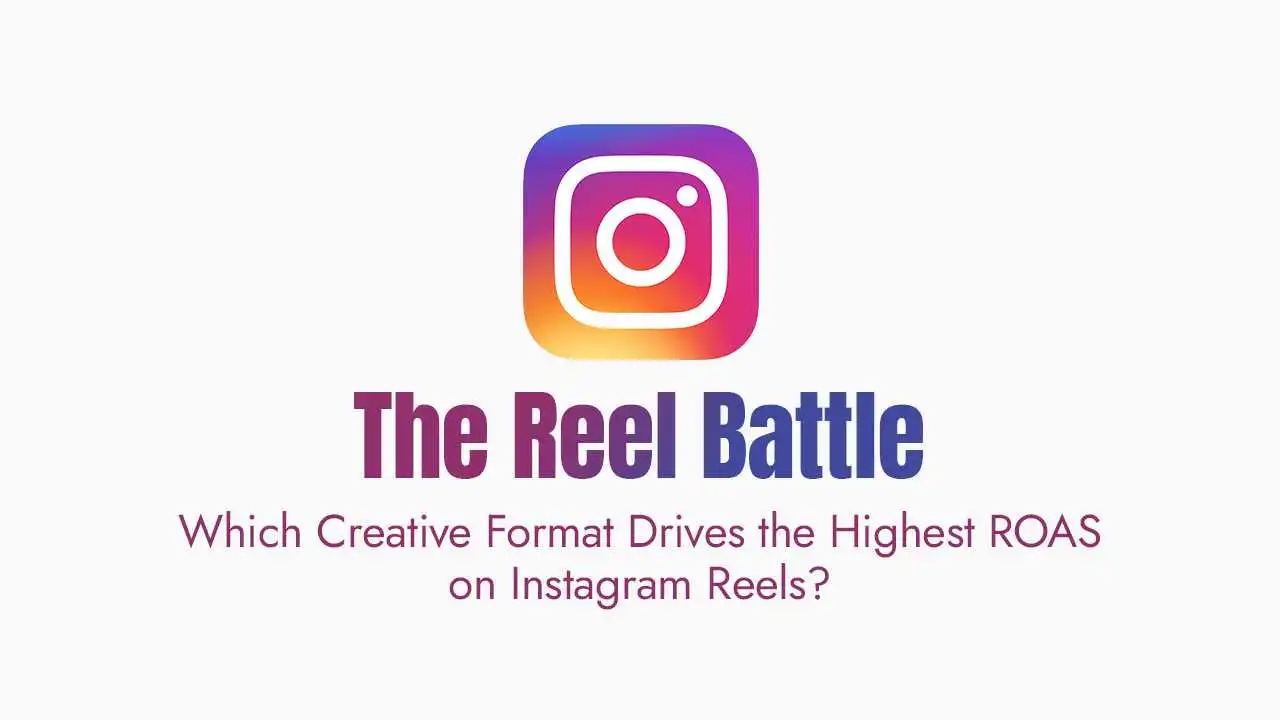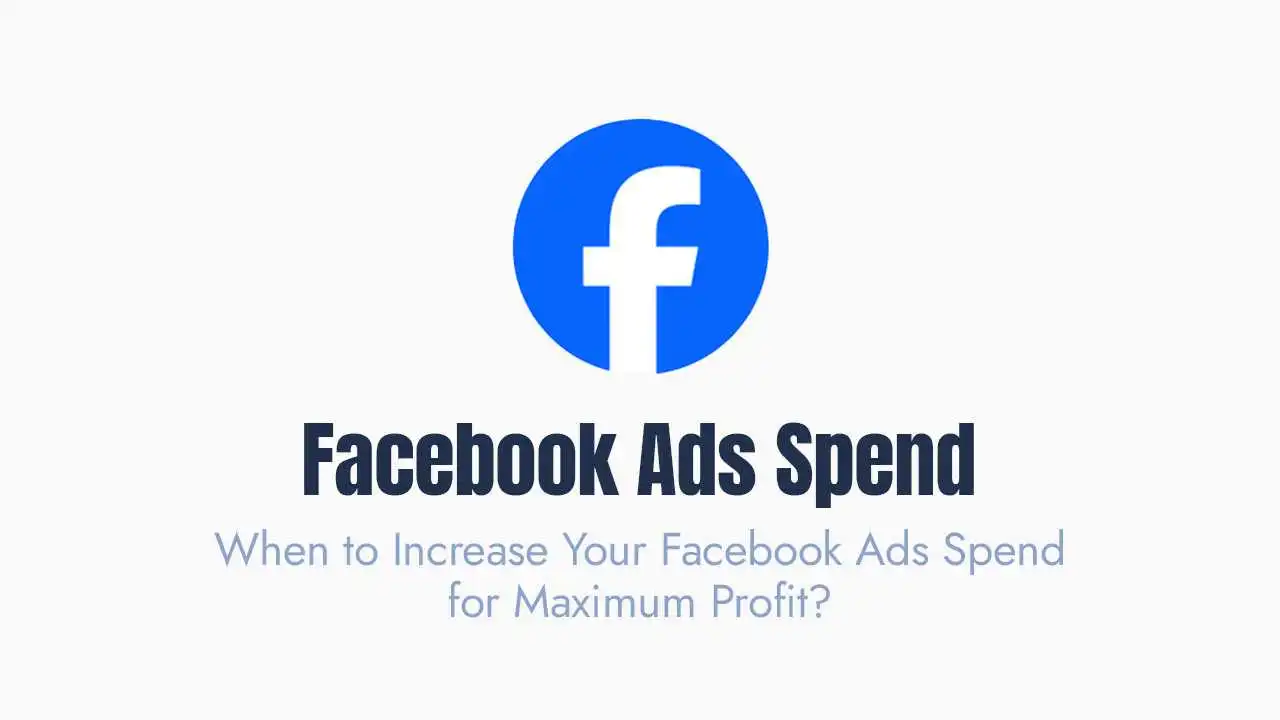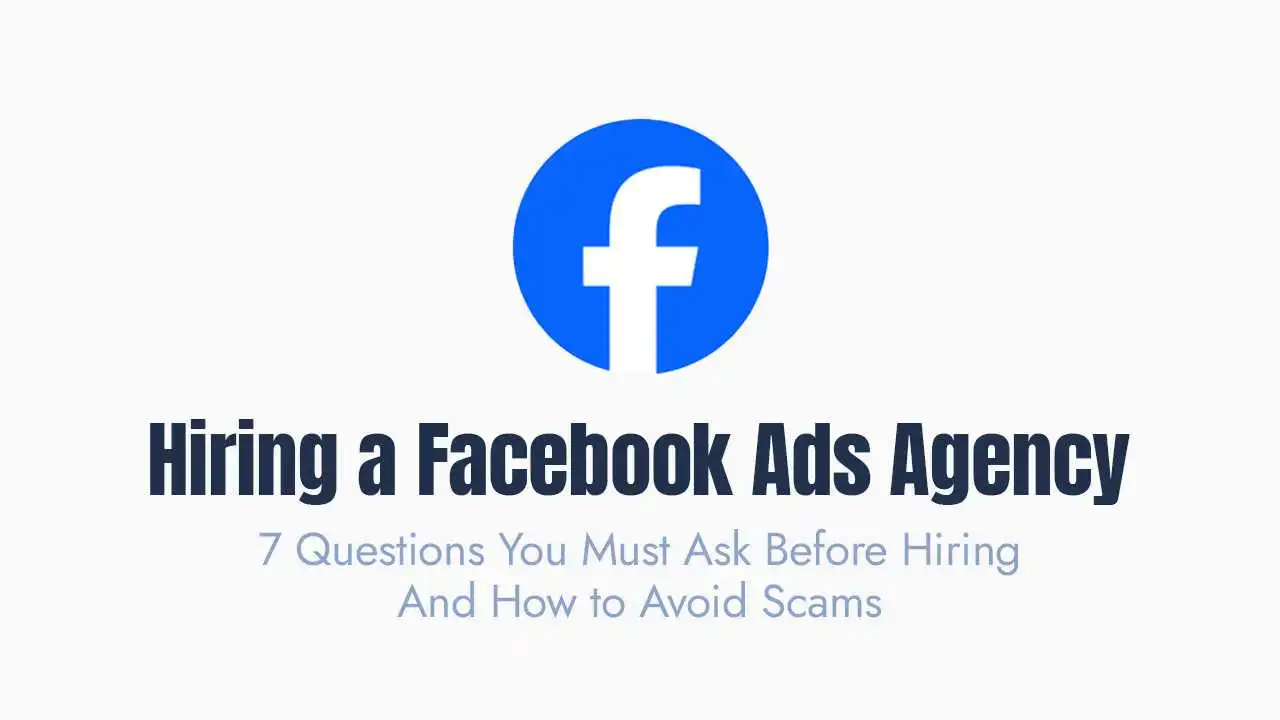In today’s attention economy, where thumbs scroll at lightning speed, stopping power is everything. Instagram Reels has emerged as the undisputed king of placements, a goldmine for brands seeking to capture fleeting attention. But let’s be honest: consistently generating high-quality, engaging video content is a monumental challenge for most. It’s not enough to simply exist on Reels; you need to dominate.
Here’s the core thesis: Your Return on Ad Spend (ROAS) on Reels isn’t just about the vertical video format itself. It’s about the style of content within that format.
The ultimate winners are those who embrace authenticity, rapid-fire delivery, and an audience-first approach. Keeping a fresh creative pipeline is the single biggest bottleneck in scaling your ad efforts – a problem perfectly solved by partnering with a specialized Facebook ads agency team for creative production.
3 Creative Styles Engineered for Reel ROAS:
Forget generic “video ads.” The real battle is won by specific, measurable creative styles designed to perform at different stages of your marketing funnel.
Style 1: The UGC (User-Generated Content) Clone
Description:
This is your raw, shaky, vertical video, shot on a phone, often featuring an unscripted person speaking directly to the camera. It’s meticulously designed to blend in, looking like organic content rather than a polished ad.
Best for:
Cold/Prospecting audiences (TOFU). Its primary goal is maximizing CTR and stopping the scroll.
Key Elements:
A compelling hook in the first 0.5 seconds (e.g., “Stop doing this if you use X product,” or “This changed my sleep forever!”), native music/text overlay, and a clear, personal value proposition.
The Win:
Highest trust factor and lowest CPC (Cost Per Click) due to high engagement.

Style 2: The Fast-Paced Product Demo/Explainer
Description:
Think highly edited, rapid-cut videos showcasing your product in action. Cuts are often synced to trending music, creating a dynamic and engaging experience.
Best for:
Middle-of-Funnel (MOFU) or Warm audiences. Perfect for generating immediate interest and clearly demonstrating how the product works.
Key Elements:
A clear problem/solution structure (show the pain point, then quickly introduce your product as the fix), benefit-driven captions, and visually pleasing, snappy transitions.
The Win:
Highest Add-to-Cart Rate due to clear value demonstration.
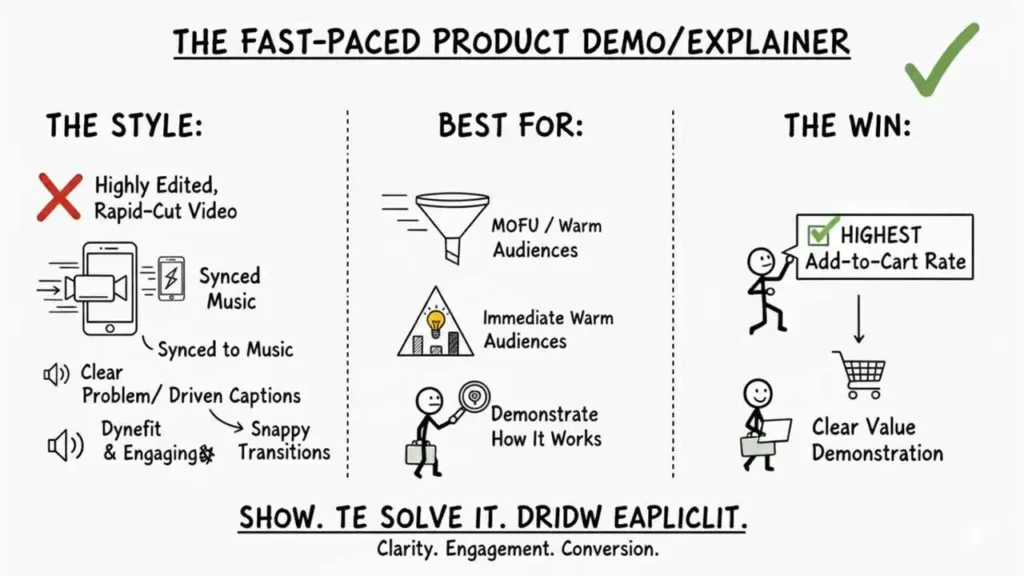
Style 3: The Social Proof Testimonial Mashup
Description:
This style strings together short, high-energy clips featuring multiple customer reviews, text snippets of 5-star ratings, or quick reactions from satisfied customers.
Best for:
Retargeting (BOFU). Designed to overcome final purchase objections and instill confidence.
Key Elements:
Trust logos, prominent star ratings, authentic customer faces, and a direct Call-to-Action (CTA) embedded within the voiceover or on-screen text.
The Win:
er or on-screen text. The Win: Highest Conversion Rate due to maximized social proof.
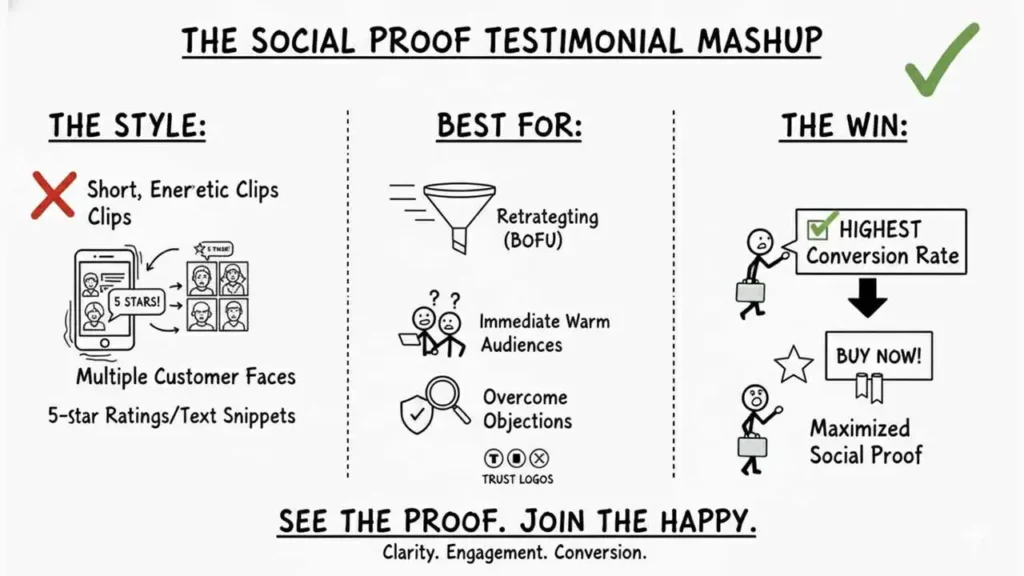
Why Testing Protocol Trumps Format?
Having the right creative styles is only half the battle. To ensure these formats consistently perform, you need a structured, relentless testing protocol—a hallmark of professional agency work. For small business owners with limited budgets, a strategic testing plan is what separates success from wasted spend.
The 7-Day Exhaustion Rule:
Fight Creative Fatigue Winning Reels have a tragically short shelf life. Your audience sees the same ad too often, your frequency metric rises (aim to keep it below 2.5), and performance inevitably crashes—this is creative fatigue.
For a small business, this burnout can happen in as little as 7 to 10 days with a small, focused audience. To maintain momentum, you must have a continuous queue of 3-5 fresh creative variations ready to swap in immediately upon the first signs of performance decline (e.g., rising CPM or falling CTR).
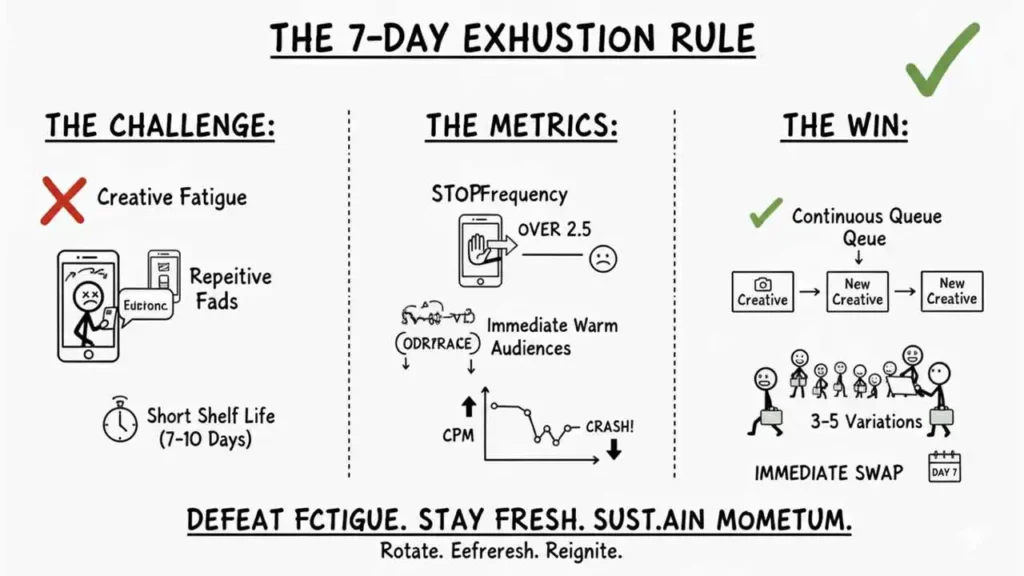
The One-Variable Test:
Learn Faster, Spend Smarter Never fall into the trap of testing too many variables at once. If you change a new hook, new music, and a new product angle in the same ad, you’ll never know what truly drove the performance shift. For every test you run, isolate only one major variable.
For example, keep the video footage, music, and product angle the same, and only change the opening hook text or the first three seconds of video. This methodological approach ensures you gain clear, actionable data about what specific element is or isn’t resonating with your audience.
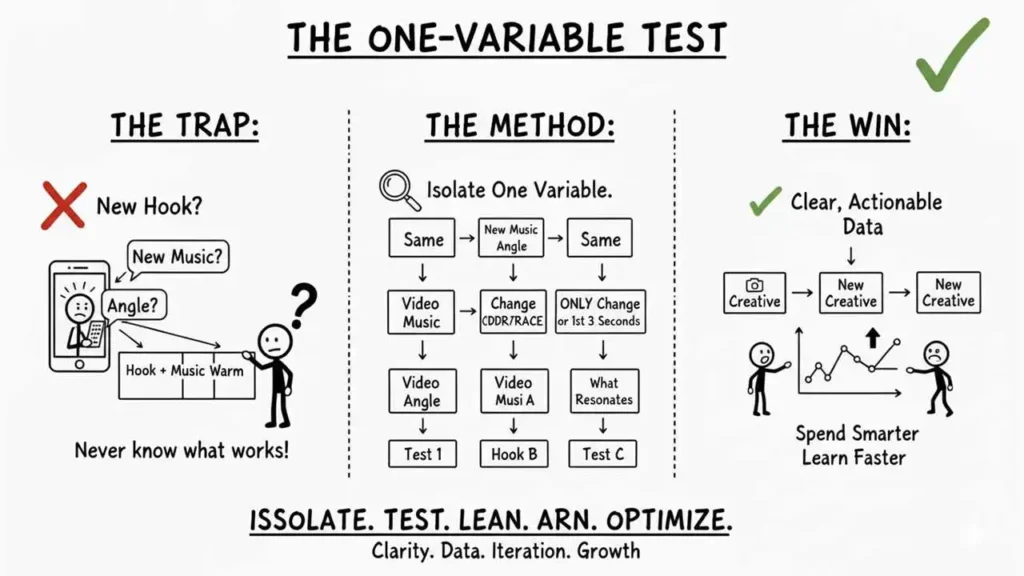
The Primary Metric for Reels:
Thumb-Stop Ratio While Click-Through Rate (CTR) and ROAS are important, for Reels, focus intently on the Thumb-Stop Ratio (First 3-Second Retention Rate). Reels are fundamentally about interruption.
If people aren’t watching past your hook, your creative is failing, regardless of your campaign objective. This metric is the true indicator of scroll-stopping power. Monitor it closely in your Ads Manager; a sudden drop means your hook is officially dead and needs to be replaced immediately.
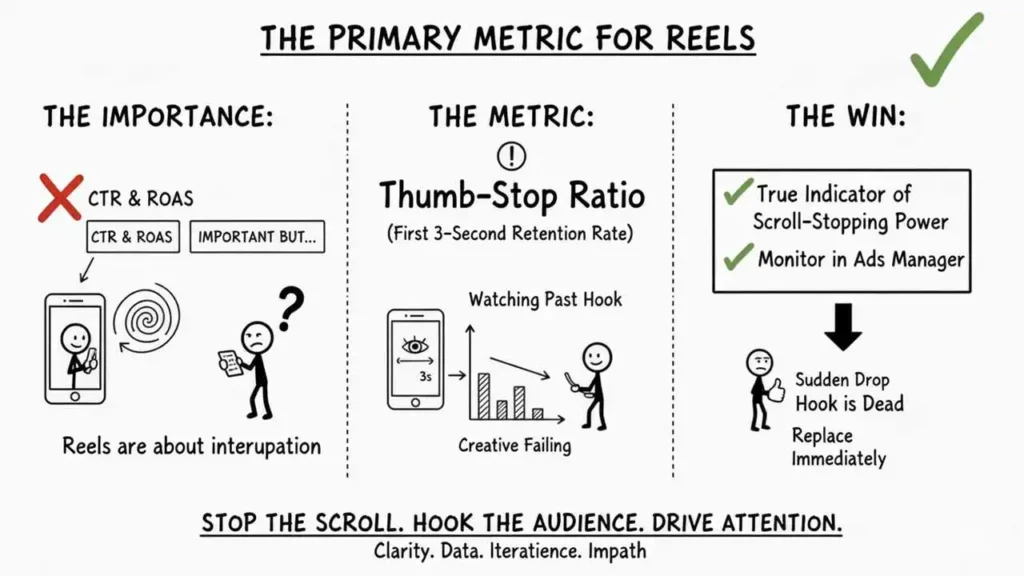
Budget Allocation for Testing (The 80/20 Rule):
As a small business, you can’t afford to waste budget. Implement an 80/20 budget strategy: 80% of your budget goes to proven, winning creatives (the scalers), and 20% goes to testing new variations.
This ensures the majority of your spend is profitable while still dedicating a portion to the vital, ongoing process of discovering your next winning ad.
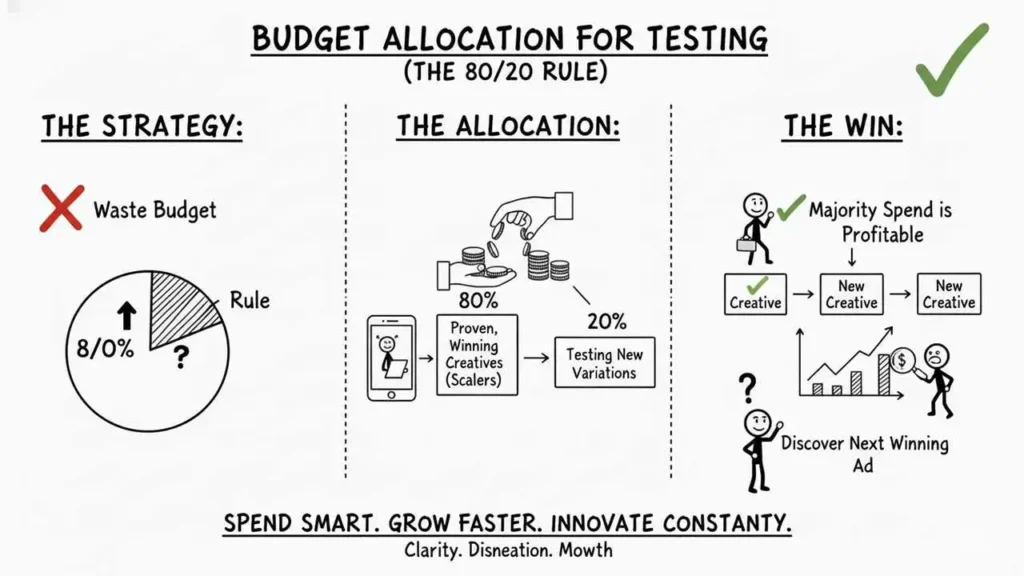
The Real Answer to Max ROAS
The highest ROAS on Instagram Reels doesn’t come from a magic bullet format. It’s a strategic combination of matching the right content style (UGC, Demo, Social Proof) to the appropriate funnel stage (Cold, Warm, Hot) and maintaining an aggressive, data-driven testing schedule.
Scaling with Reels is a full-time job of creative production and performance analysis. Most businesses simply can’t keep up with the 3-5 new pieces of creative required weekly to stay ahead of creative fatigue and continuously optimize.
Need a team to design, test, and scale your winning Reels creative pipeline? That’s precisely what we do.
Frequently Asked Questions (FAQs):
1. What is the single most important metric for me to check daily in my Reels ads?
The single most important metric, especially for top-of-funnel Reels ads, is the First 3-Second Video Play Rate (or Thumb-Stop Ratio). This metric tells you if your initial hook is successful in making the user stop scrolling. If this rate is low, it means your audience is dismissing the ad instantly, leading to wasted impressions and a higher Cost Per Thousand Impressions (CPM). A high 3-second play rate indicates a successful hook, which is the foundational first step to achieving a higher CTR and, ultimately, a higher ROAS.
2. How often should a small business change its Reels creative to avoid ad fatigue?
You should aim to refresh your top-performing Reels creative every 7 to 10 days, especially when targeting cold audiences. Creative fatigue is a rapid decline in performance (e.g., lower CTR and higher cost) that occurs when your audience sees the same ad too frequently. For a smaller audience size typical of a small business, this fatigue sets in quickly. Proactively swapping in 3-5 different creative variations based on your testing protocol will keep your ads fresh and maintain efficient delivery.
3. I have a limited budget. Should I focus on UGC or the Fast-Paced Demo style first?
If you have a limited budget and are primarily focused on finding new customers (Cold Traffic), you should start by prioritizing the UGC Clone style. UGC-style content is generally cheaper to produce, as it requires minimal professional editing and leans on authenticity. More importantly, this style has the highest potential for a strong Thumb-Stop Ratio and lowest Cost Per Click (CPC), meaning it is the most efficient way to get new eyes on your product and drive awareness with limited ad spend.
4. What is the difference between ROAS and ROI for my Instagram ads?
ROAS (Return on Ad Spend) measures the gross revenue generated for every dollar spent on ads (e.g., a 4x ROAS means you made $4 in revenue for every $1 spent). ROI (Return on Investment) measures your net profit after all costs are accounted for, including the cost of the goods sold, shipping, labor, and ad spend. For daily ad optimization, you monitor ROAS to see which campaigns are winning, but for overall business health, you must track ROI to ensure your advertising is actually making you a profit.
5. My current Reels have a great hook, but people aren't adding to cart. What part of the funnel should I focus on?
If your hook (Thumb-Stop Ratio) is great, but your conversion metrics (Add-to-Cart or Purchase) are low, the problem likely lies in your Middle-of-Funnel (MOFU) or product explanation. The audience is interested enough to stop scrolling, but the ad fails to immediately and clearly articulate the product’s value, benefits, or how it solves their problem. You should test new versions of the Fast-Paced Product Demo/Explainer style, ensuring the value proposition is hammered home immediately after the hook to bridge the gap between attention and intent.

